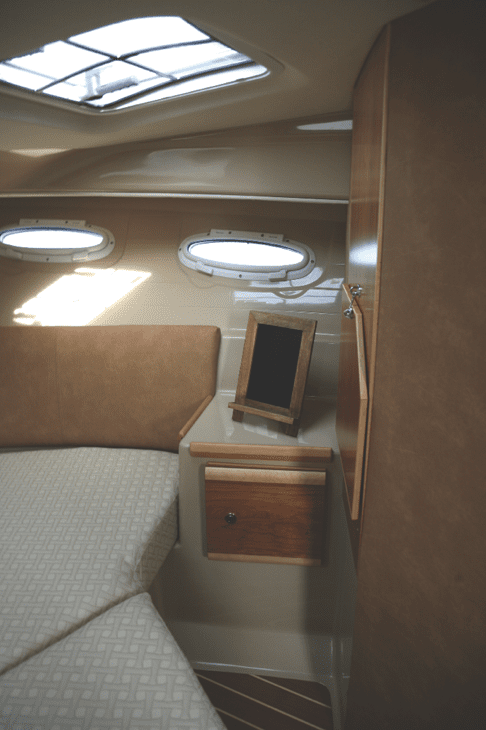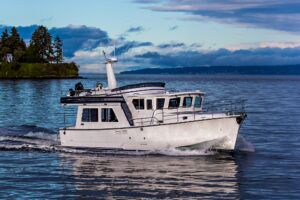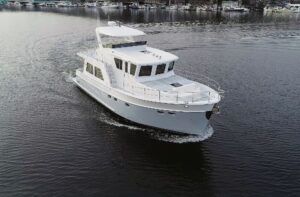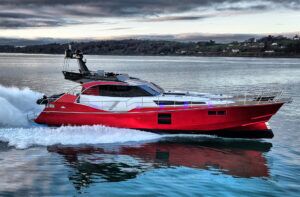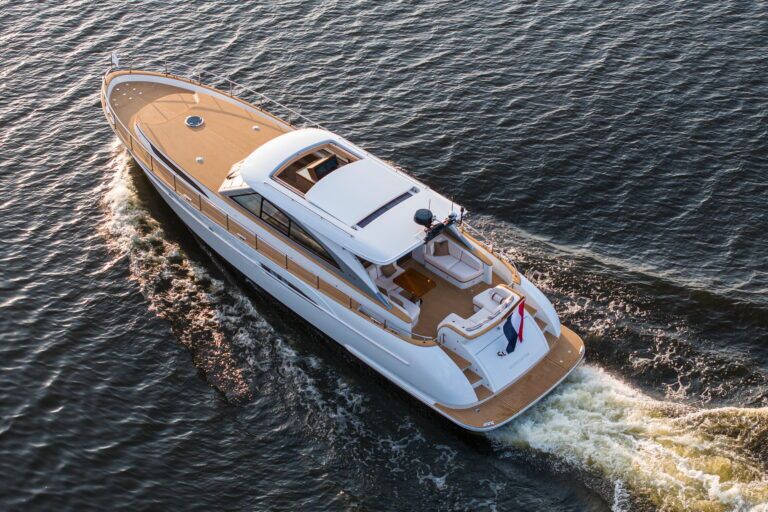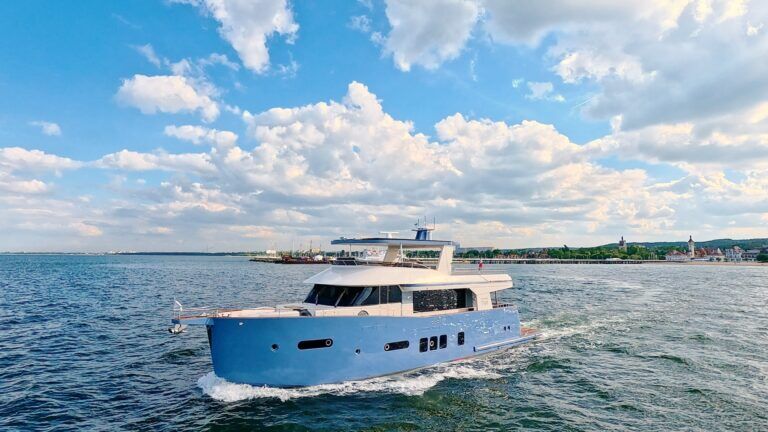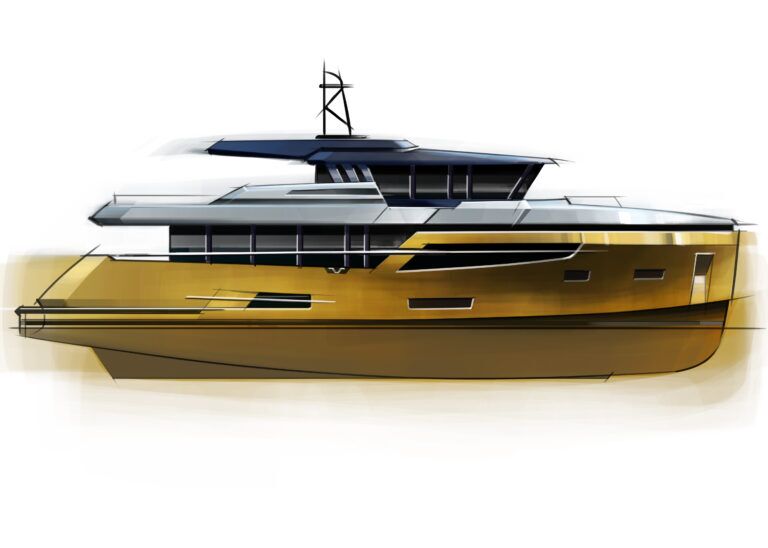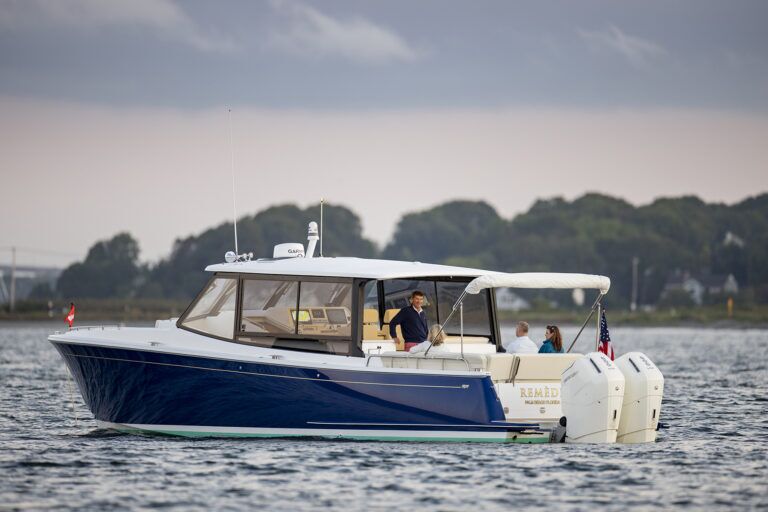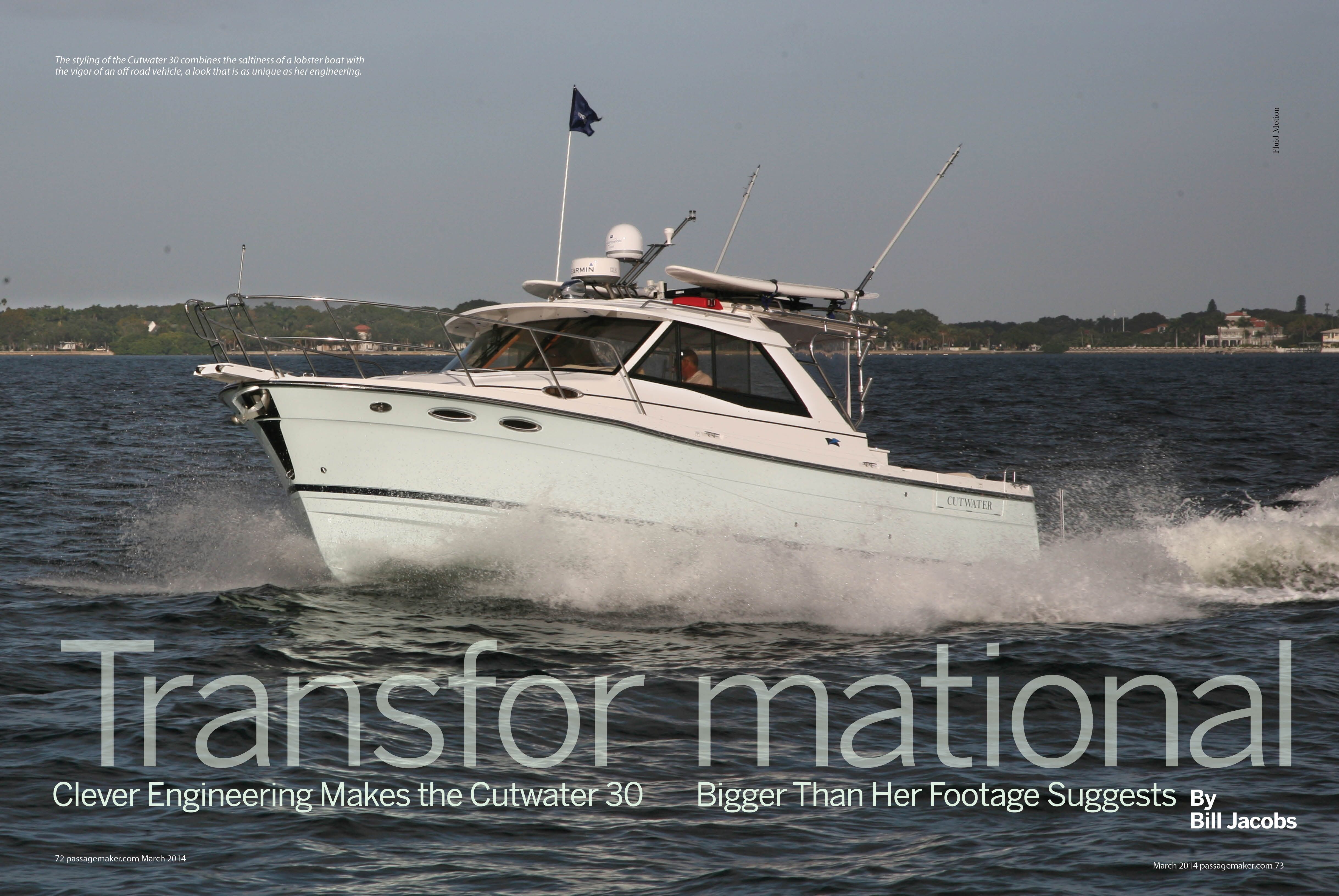
Hasbro has made a bundle with its Transformer toys, which can morph from fearsome alien robots into things like sports cars. If the company ever turned to designing yachts, it would face a fierce competitor in Fluid Motion, builder of the Cutwater line of boats. Cutwaters are category-busting cruisers that offer versatility with a capital “V.”
Fluid Motion, which also builds the compact, trailerable Ranger Tug trawlers, recently was given the Operational Award of Excellence by the Association of Washington Businesses. The company has quadrupled in size in the past six years—it has not only avoided the financial storm, it has reveled in it.
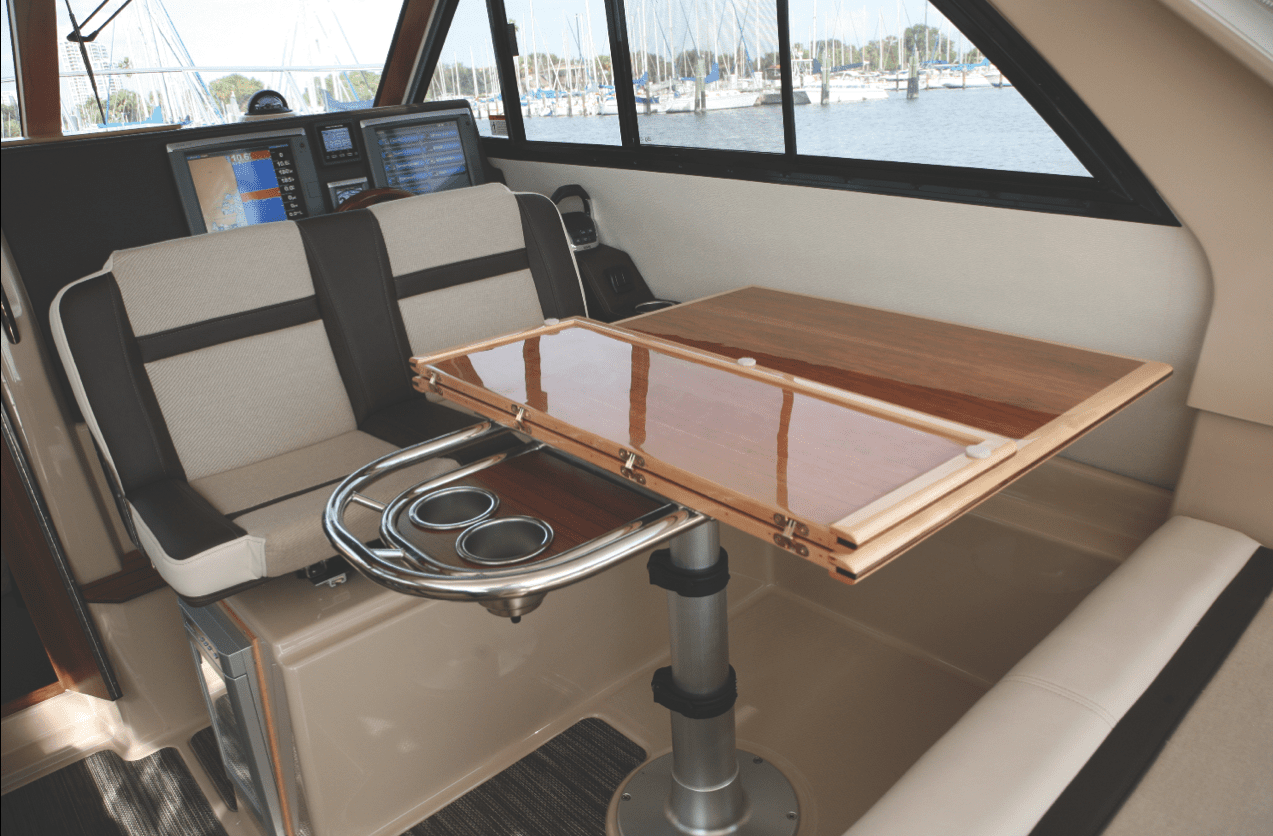
What makes Fluid Motion’s products so successful in a down market? The new Cutwater 30 is the perfect boat to examine to find an answer.
The Cutwater line was introduced in 2011, with two trailerable boats: the 26 and the 28, both of which have an 8-foot beam. The Cutwaters address four distinct markets:
• Powerboat owners looking to downsize.
• Entry-level cruisers.
• Boaters interested in trailering their boats home.
• Those who want a fast trawler.
Despite a 10-foot beam, the Cutwater 30 maintains the brand’s trailerable tradition, though states require an individual permit because the boat is wider than 8 or 8½ feet. The permits are usually issued online nowadays.
Flexible and Fun
I was invited aboard Cay-Sea at the conclusion of the St. Petersburg boat show in December. Aboard were the principals of Edgewater Yacht Sales of Pensacola, Florida—Emile Petro II and his son Emile III—as well as staff member Steve Siegel. Rounding out the crew was the boat’s new owner, Casey Hupp, grandmother of four and a perfect example of how the Cutwater 30 meets the needs of an adventuress. Casey was widowed a few years ago, but not before she and her late husband, Bob, lived their dream of cruising the Great Loop. Unlike many powerboat owners, who do the loop in a trawler, they did it in a Regal 34 Express Cruiser.
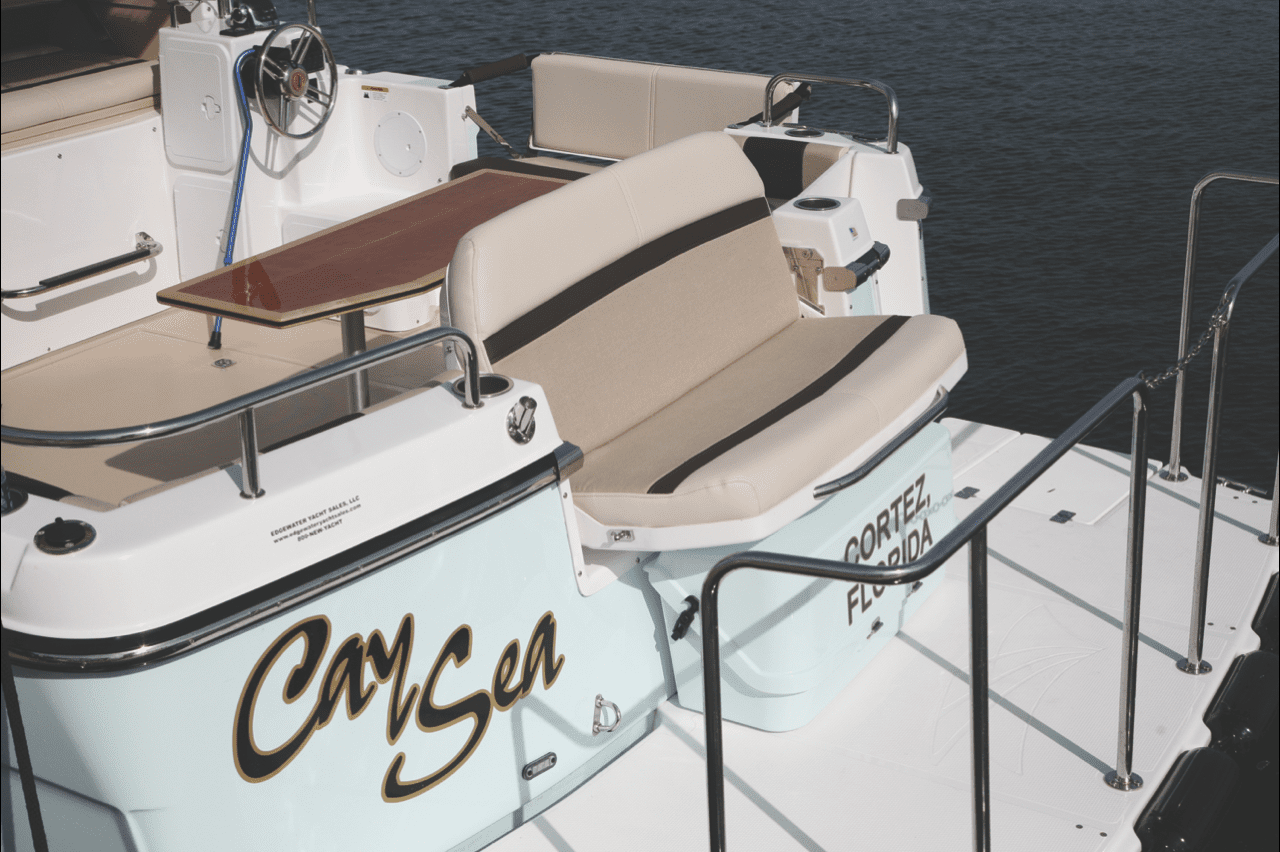
Initially, Casey was concerned about the two of them cruising alone on such a long journey. Casey suggested a shakedown cruise. They left their dock on Florida’s west coast, crossed the Gulf of Mexico to New Orleans and navigated the Mississippi River north—all the way to Minnesota and back!
Although Casey has lost her life partner and cruising companion, she has not lost her lust for adventure. When she saw the Cutwater 30, it was love at first sight. On the day we spent aboard Cay-Sea on Tampa Bay and at the dock, she extolled the virtues of the many features that sold her on launching another boating adventure. At the time, she was awaiting the final dealer-installed equipment to complete her boat.
“I wanted to move into a more traditional style boat and had many to look at during the fall boat shows,” Casey said. “When I came aboard the Cutwater and discovered all of the flexibility of the interior, I was sold.”
The boat’s profile is very similar to that of her smaller sisters, but her 10-foot beam significantly increases her interior volume. Her styling is an adaptation of the Downeast look but without the sweeping sheerline of a fishing boat; that ensures more space toward amidships, where people tend to be.
The Cutwater 30’s stepped-keel design offers protection for the running gear. The builder says it also helps produce a layer of air beneath the hull to increase efficiency. Her single Volvo D6 engine sits farther down in the hull because of the design of the engine bed; this provides a lower center of gravity and an almost level placement of the drive components. A bow thruster and stern thruster are standard on the 30, making the boat easy to handle in the tightest of docking situations.
The Cutwater 30 is available in two versions: a sedan cruiser, providing an enclosed saloon, and a Sport Top version, which opens the saloon to the stern deck. Both are equipped with a Thule-style roof rack, which, through a variety of accessories, can carry a complete range of water toys. Our test boat, the Sport Top, also carried a radar dome and a satellite antenna. Casey had already loaded her two stand-up paddleboards.
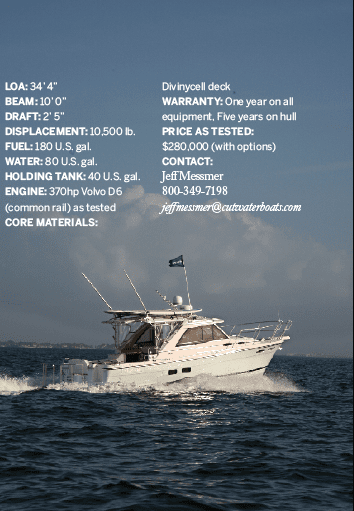
Things get very interesting when you step into the cockpit or on deck. Let’s start at the bow. A stainless folding ladder is concealed within the molded bowsprit. If you wish to go ashore, you can run the boat right up on the sand and use the ladder to exit to the beach. Flanking the anchor windlass are deck hatches that open to a single upholstered seat and footwell. On the centerline of the cabin top, a hinged panel opens to an upholstered sun lounge with an angled back. Count them: three seats forward of the windshield, all of which add up to paradise for the sun-worshiping crowd.
Made for Multi-tasking
Sufficiently wide side decks both port and starboard are enclosed with a stainless steel rail with handrails on top. The cockpit has a built-in two-seat settee at the transom, but the seat back is reversible, giving the occupants the option of facing forward at the cockpit table, or aft to enjoy the sunset. Once again, Casey is adding her personal touch: underwater lights to let the grandkids keep an eye on fish swimming below while at anchor.
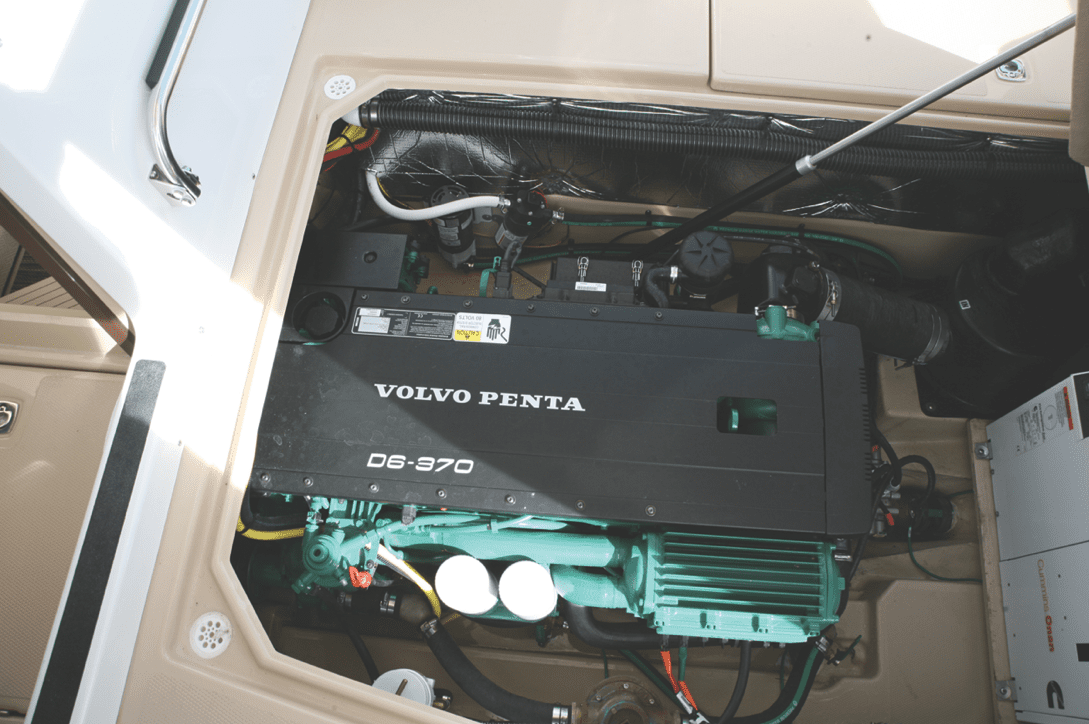
The next surprise is two concealed additional seats. They fold out from the sides of the cockpit, overhanging the beam of the boat. Clever, but I don’t think I would want to sit there while the boat is under way. Yet another seat in the cockpit is available by reversing the seat back on the settee on the starboard side. Suddenly there is seating for eight without using an inch of cockpit floor space. Added to the bow seats, we now have seating for 11.
Entering the open saloon, there is seating for four at the starboard dinette, and immediately forward is a double helm seat. Even the top of the dinette table is convertible—from a full-size dining top to a smaller cockpit table with drink holders and a sturdy stainless steel handhold.
The port side features a full-length countertop. Raising the center section provides access to a two-burner stove with oven and a stainless sink. The forward third of the counter extends to another single seat facing forward. Flip open that section of the countertop, and what was the single helm seat can now be reconfigured to a chaise longue facing aft.
We have added at least five more seats. Totaling up all possibilities, there are 16 seats at or above deck level. But wait—there’s more! Hidden below the aft dinette settee is access to a snug, 7-foot double berth, perfect for a couple of kids or for use as a massive storage area.
Compared with the saloon and afterdeck, the forward cabin to which the companionway stair leads is rather conventional. A double berth, partially a walk-around, occupies most of the space, but there is still sufficient room for a large hanging locker to port. A separate head to starboard contains a sink, vacuum-flush toilet and 6-foot stand-up shower. A concealed circular door rotates around the shower, enclosing it from the other fixtures.
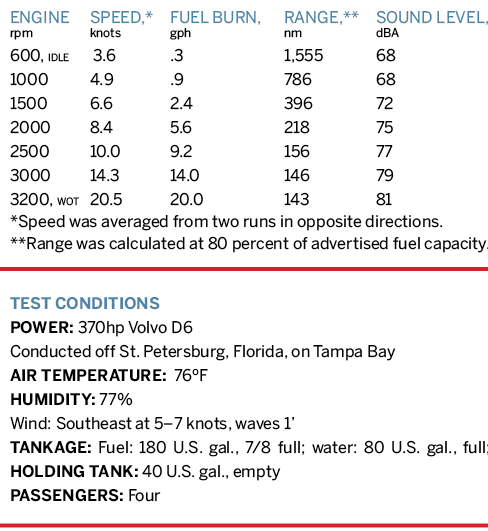
I do not think I have ever been aboard any boat that contains nearly as many choices in configuration, and they all function easily. The only difficulty may be in remembering all the possibilities. One small matter of criticism from my point of view is the number of different wood species and finishes that are used inside the boat, but that is only a personal preference.
In addition to watching the Cutwater 30 under way earlier in the day, during which her vigorous performance was visible, I went for a short test run out in Tampa Bay. The morning’s benign weather was lovely if not challenging. Because of her highly refined hull design, the boat was quick to accelerate and comfortable to cruise. Because the Sport Top model has an open saloon, sound levels were somewhat elevated compared to what you would find with an enclosed helm, but noise was not excessive and conversation was easy.
The Cutwater 30 is attractive, versatile, finely constructed and fast. Although she will appeal to a wide variety of boaters, she stands in a category all her own.
